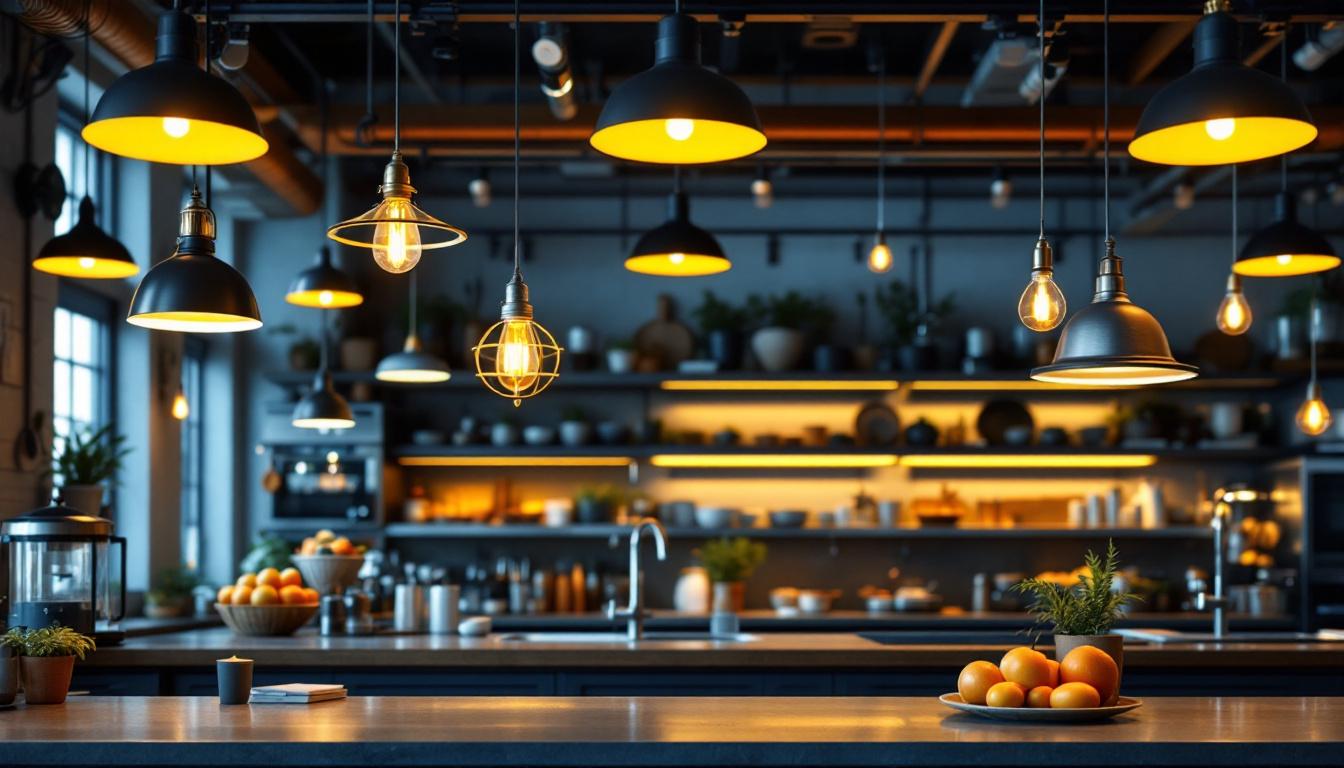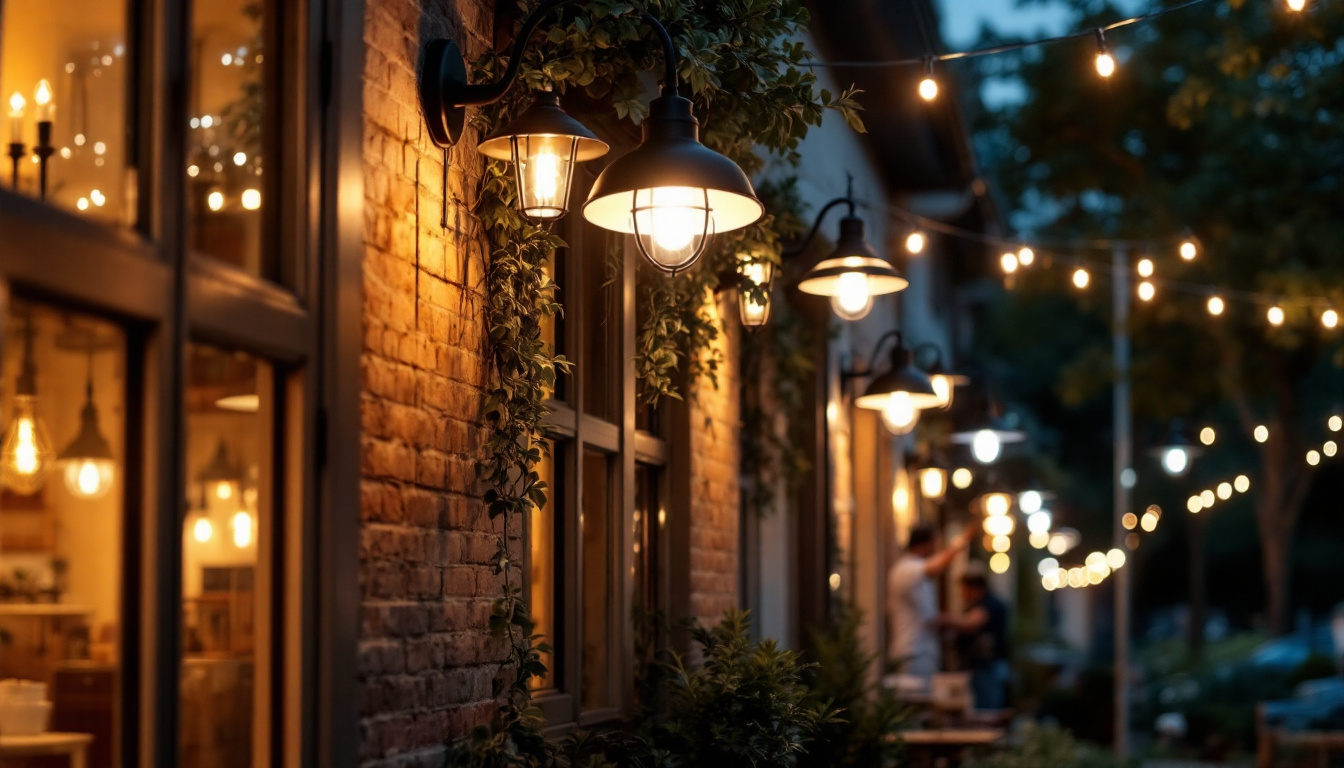
In the world of commercial kitchens, lighting plays a crucial role in ensuring safety, efficiency, and productivity. For lighting contractors, understanding the specific needs of industrial kitchen environments is essential for selecting the right lamps. This guide will explore various factors to consider when choosing industrial kitchen lamps, the types of lighting available, and the best practices for installation and maintenance.
Industrial kitchens are dynamic environments that require specialized lighting solutions. Unlike residential settings, these kitchens often deal with high heat, moisture, and the need for bright, even illumination. Understanding these unique challenges is the first step for lighting contractors in selecting appropriate fixtures. The bustling atmosphere of an industrial kitchen, combined with the fast-paced demands of food preparation, necessitates a lighting design that not only enhances visibility but also contributes to the overall efficiency of the workspace.
One of the primary concerns in an industrial kitchen is the heat generated by cooking equipment. Lighting fixtures must be able to withstand high temperatures without compromising performance or safety. Look for lamps that are rated for high-heat environments, typically those made from durable materials that can endure the rigors of a bustling kitchen. Additionally, the placement of these fixtures is crucial; overhead lights should be positioned to minimize direct exposure to heat sources while still providing adequate illumination for chefs and kitchen staff to perform their tasks effectively. This strategic placement can help prolong the lifespan of the lighting fixtures and reduce maintenance costs.
Another critical factor is the presence of moisture and humidity. Kitchens often have steam and water exposure, which can damage standard lighting fixtures. Selecting lamps with a high ingress protection (IP) rating will ensure that they can withstand these conditions. Fixtures that are specifically designed for damp locations will provide longevity and reliability. Moreover, incorporating fixtures with sealed designs can prevent moisture from infiltrating the electrical components, thereby enhancing safety and reducing the risk of electrical failures. It’s also beneficial to consider the use of LED lighting, which not only offers energy efficiency but also generates less heat, further mitigating the impact of humidity in the kitchen environment.
In addition to heat and moisture resistance, energy efficiency is becoming an increasingly important consideration for industrial kitchens. With the rising costs of energy and a growing emphasis on sustainability, lighting solutions that reduce energy consumption while providing adequate illumination are highly sought after. LED lighting, for instance, not only consumes significantly less power than traditional incandescent or fluorescent bulbs but also has a longer lifespan, which translates to lower replacement costs and less waste. Furthermore, integrating smart lighting controls can optimize energy usage by allowing for dimming and scheduling based on kitchen activity, ensuring that lights are only on when needed.
When it comes to industrial kitchen lamps, there are several types to consider. Each type serves different purposes and offers unique benefits. Understanding these options will help lighting contractors make informed decisions.
LED lights have become increasingly popular in industrial kitchens due to their energy efficiency and long lifespan. They produce less heat than traditional incandescent bulbs, making them ideal for high-temperature environments. Additionally, LED lights offer a variety of color temperatures, allowing contractors to create the desired ambiance while maintaining functionality. The versatility of LED lighting also extends to its design; they can be found in various forms, such as panel lights, tube lights, and even flexible strips, making them suitable for different kitchen layouts. Moreover, the ability to dim LED lights can enhance the working environment, providing brighter light for detailed tasks and softer illumination for less intensive activities.
Fluorescent lamps are another option commonly found in commercial kitchens. They provide bright, even illumination and are generally more energy-efficient than incandescent bulbs. However, they may not be as durable as LED options, especially in high-heat or humid conditions. It is essential to consider the specific environment before opting for fluorescent lighting. Additionally, fluorescent lights are available in various sizes and configurations, allowing for flexibility in installation. They can be integrated into fixtures that are specifically designed to withstand the rigors of a kitchen, such as those with protective covers to guard against moisture and grease. Furthermore, advancements in technology have led to the development of high-efficiency fluorescent bulbs that offer improved performance and longevity, making them a viable choice for many kitchen settings.
HID lighting, which includes metal halide and high-pressure sodium lamps, is known for its brightness and efficiency. These fixtures are often used in larger industrial kitchens where high levels of illumination are necessary. However, they can take time to warm up and may not be suitable for areas requiring instant lighting. Contractors should evaluate the specific needs of the kitchen to determine if HID lighting is appropriate. Additionally, HID lamps are known for their ability to penetrate smoke and steam, which can be particularly beneficial in busy kitchens where visibility is crucial. While they do require more maintenance than LED options, their longevity and ability to cover large areas with bright light can make them a worthwhile investment for expansive kitchen environments. Furthermore, with the introduction of newer technologies, some HID options now come with improved color rendering capabilities, ensuring that food colors appear vibrant and true to life, which is essential for both presentation and quality control.
Choosing the right industrial kitchen lamps involves more than just selecting a type of fixture. Several key considerations must be taken into account to ensure optimal performance and safety.
Light output, measured in lumens, is a critical factor in selecting kitchen lamps. The goal is to achieve adequate illumination to ensure safety and efficiency. It is important to assess the layout of the kitchen and the tasks performed in each area to determine the required light levels. Additionally, the distribution of light is vital; fixtures should provide even illumination without creating harsh shadows or overly bright spots.
Energy efficiency is a significant consideration for commercial kitchens, where lighting can account for a substantial portion of energy costs. Selecting energy-efficient lamps, such as LEDs, can lead to significant savings over time. Furthermore, many jurisdictions offer incentives for energy-efficient upgrades, making this an important factor for contractors and their clients.
The color temperature of lighting can greatly impact the working environment. In industrial kitchens, a cooler color temperature (around 4000K to 5000K) is often preferred as it mimics daylight and enhances visibility. This is especially important for tasks requiring precision, such as food preparation and plating. Contractors should consider the specific tasks performed in the kitchen when selecting color temperatures.
Proper installation of industrial kitchen lamps is crucial for ensuring safety and functionality. Lighting contractors must adhere to best practices to avoid common pitfalls and ensure a successful project.
Before installation, it is essential to familiarize oneself with local building codes and regulations. Many jurisdictions have specific requirements for commercial kitchen lighting, including safety standards and energy efficiency mandates. Ensuring compliance not only protects the contractor but also provides peace of mind for the client.
The placement of lighting fixtures can significantly affect the overall effectiveness of the lighting design. Fixtures should be strategically positioned to provide adequate illumination for all work areas, including cooking stations, prep areas, and storage spaces. Utilizing a combination of overhead and task lighting can enhance visibility and reduce shadows.
After installation, ongoing maintenance is vital to ensure the longevity and performance of the lighting system. Regularly checking for burnt-out bulbs, cleaning fixtures, and ensuring that all electrical components are functioning correctly will help maintain optimal lighting conditions. Establishing a maintenance schedule can prevent unexpected outages and prolong the lifespan of the fixtures.
As technology advances, innovative lighting solutions are emerging that can further enhance the functionality and efficiency of industrial kitchens. Lighting contractors should stay informed about these developments to offer the best options to their clients.
Smart lighting systems allow for greater control over kitchen lighting. These systems can be programmed to adjust brightness levels based on the time of day or specific tasks, leading to energy savings and improved working conditions. Additionally, smart systems can integrate with other kitchen technologies, creating a more cohesive and efficient environment.
Task-specific lighting is designed to provide focused illumination for particular activities within the kitchen. For example, under-cabinet lighting can enhance visibility in food prep areas, while pendant lights can be used over cooking stations. By incorporating task-specific lighting, contractors can create a tailored lighting solution that meets the unique needs of the kitchen.
Choosing the right industrial kitchen lamps is a multifaceted process that requires careful consideration of various factors. From understanding the unique needs of the kitchen environment to selecting the appropriate type of lighting and ensuring proper installation, lighting contractors play a vital role in creating safe and efficient kitchen spaces. By staying informed about the latest trends and technologies in lighting, contractors can provide their clients with optimal solutions that enhance productivity and safety in industrial kitchens.
In summary, the right lighting not only illuminates the workspace but also contributes to the overall efficiency and atmosphere of the kitchen. By following the guidelines outlined in this article, lighting contractors can make informed decisions that lead to successful projects and satisfied clients.
Ready to elevate the lighting in your industrial kitchen projects? Look no further than LumenWholesale for a comprehensive range of top-quality, spec-grade lighting products. Our unbeatable wholesale prices mean you can access superior lighting solutions without the inflated markups often found at local distributors. With LumenWholesale, you’re choosing reliability, high performance, and the highest industry standards for every project. Plus, with the convenience of free shipping on bulk orders, you can enjoy premium lighting at the best value — without hidden fees or compromises. Don’t miss out on the perfect blend of quality, affordability, and convenience. Visit Wholesale Lighting at the Best Value and make LumenWholesale your go-to source for industrial kitchen lighting excellence.

Discover the essential resources lighting contractors rely on to master the art of illuminating buildings.

Discover how outdoor shop lights can provide a competitive edge for lighting contractors.

Discover how lighting contractors can enhance their business by mastering the art of selling chandeliers.

Discover how dusk-to-dawn LED outdoor lighting can transform your business strategy and secure more contracts.